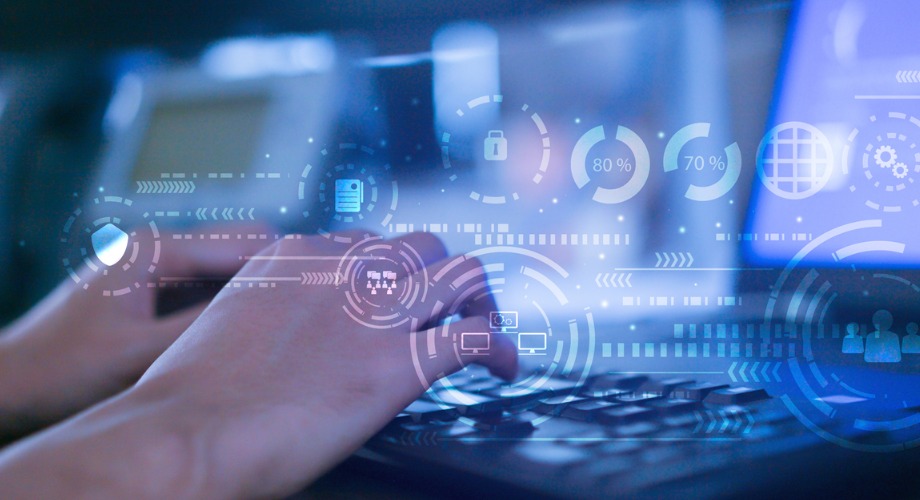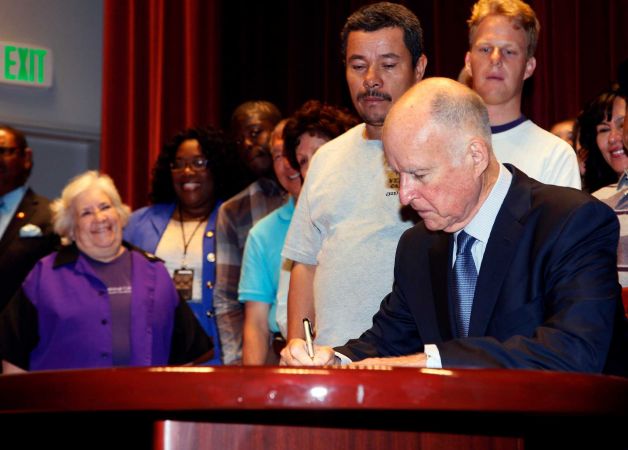Daily Business Report-April 9, 2020
Volunteers’ devices will perform small, virtual experiments to identify compounds that might be used as treatments candidates for COVID-19. (Illustration by Scripps Research)
Your computer can help scientists
seek potential COVID-19 treatments
Under a collaboration between IBM and Scripps Research, anyone in the world with a PC, laptop or Mac and an internet connection will be able to help scientists seek chemical compounds that might be effective against COVID-19.
To do so, volunteers’ devices will perform small, virtual experiments to identify chemical compounds, including those in existing medicines, that might be used as treatments candidates for COVID-19. Compounds that show promise for treating COVID-19 will undergo further testing and analysis.
The project, designed and led by Scripps Research, will be hosted on IBM’s World Community Grid, a trusted, crowdsourced computing resource provided at no charge for scientists.
Volunteers download a small, safe app that works when their devices are otherwise idle or in light use. Operating unobtrusively in the background without slowing users’ systems, the app distributes computational assignments and returns completed calculations to researchers, all via the IBM cloud. Volunteers need not have any special technical expertise to participate; the process is automatic and secure. Personal information is never shared, and the software cannot access personal or business files. (You can sign up to participate at www.ibm.org/OpenPandemics.)
By crowdsourcing power from thousands of computing devices, the project, called “OpenPandemics – COVID-19,” will easily be able perform hundreds of millions of calculations needed for simulations. This can potentially accelerate the drug discovery or drug re-purposing process, traditionally performed more slowly in a traditional laboratory. As with all of IBM’s World Community Grid projects, all data generated by this effort will be made publicly available.
___________________________
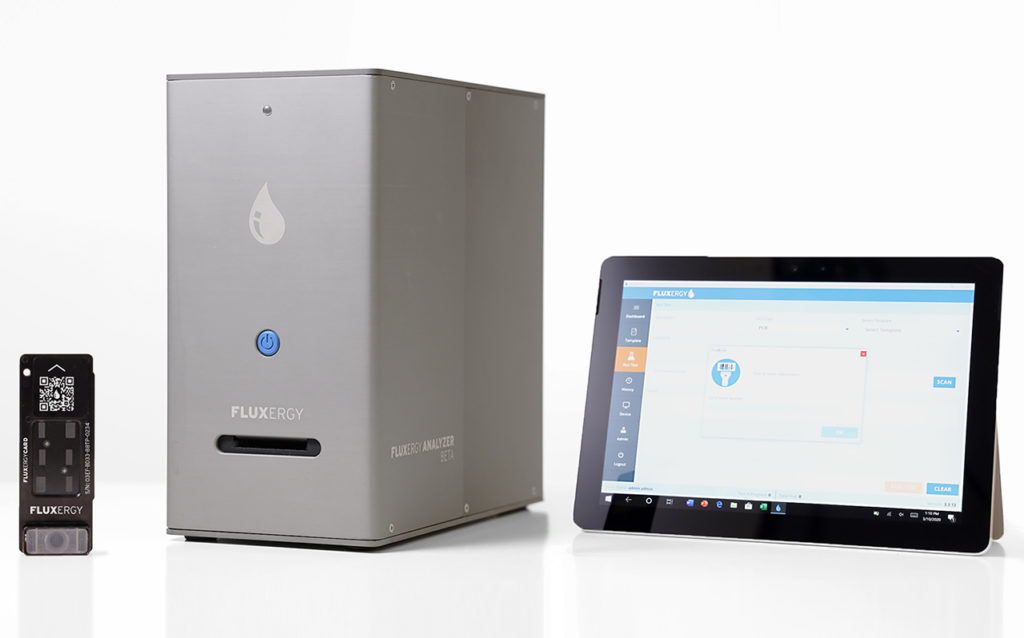
Company founded by engineering
alumni advances 1-hour COVID-19 test
As businesses are forced to close their doors and communities hunker down to ride out the coronavirus pandemic, many people in the tech and engineering industries are looking for ways to help.
One such group includes the engineers behind Fluxergy, a medical diagnostic company based in Irvine, that designs and builds rapid point-of-care diagnostic testing devices. Over the last several weeks and in collaboration with UC San Diego Health faculty, they’ve been testing a system to diagnose COVID-19 in under an hour.
On March 30, 2020, they submitted an Emergency Use Authorization (EUA) to the U.S. Food and Drug Administration (FDA) in the hopes that their device can be deployed in medical settings within the next few weeks, making it possible for healthcare systems to test for the virus in under an hour, at the point-of-care. Currently, most COVID-19 tests are sent from the hospital or testing location to an outside lab to be analyzed, often taking hours or days for patients to get a result. During Fluxergy’s validation testing on patient samples with UC San Diego Health, they were able to provide results in an hour or less.
Most of the team behind Fluxergy met as engineering students at the UC San Diego Jacobs School of Engineering, where Tej Patel, Fluxergy co-founder and president, and others were members of the Formula Society of Automotive Engineers (SAE) team as undergraduates.
___________________________
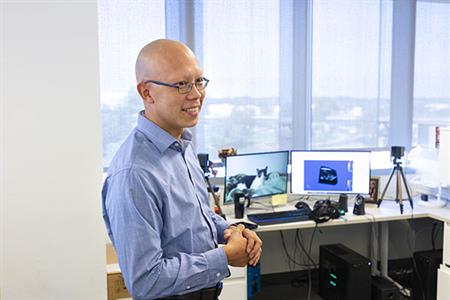
Artificial intelligence enables rapid lung
imaging analysis at UC San Diego Health
For most patients who have died of COVID-19, the pandemic disease caused by a novel coronavirus, the ultimate cause of death was pneumonia, a condition in which inflammation and fluid buildup make it difficult to breathe. Severe pneumonia often requires lengthy hospital stays in intensive care units and assistance breathing with ventilators — medical devices now in high demand in some cities grappling with a surge of COVID-19 cases.
To quickly detect pneumonia — and therefore better distinguish between COVID-19 patients likely to need more supportive care in the hospital and those who could be followed closely at home — UC San Diego Health radiologists and other physicians are now using artificial intelligence (AI) to augment lung imaging analysis in a clinical research study enabled by Amazon Web Services (AWS).
The new AI capability has so far provided UC San Diego Health physicians with unique insights into more than 2,000 images. In one case, a patient in the Emergency Department who did not have any symptoms of COVID-19 underwent a chest X-ray for other reasons. Yet the AI readout of the X-ray indicated signs of early pneumonia, which was later confirmed by a radiologist. As a result, the patient was tested for COVID-19 and found to be positive for the illness.
___________________________
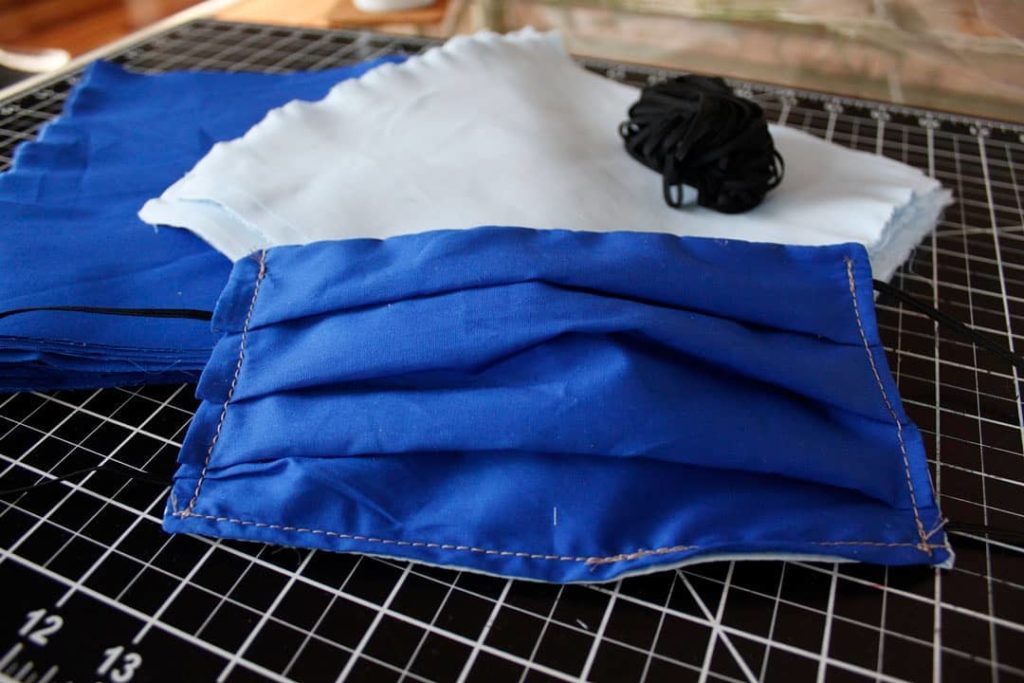
San Diego Continuing Education students
volunteer to sew protective gear
Clothing construction and textile students at San Diego Continuing Education (SDCE) are volunteering with Project Mask to help combat critical protective gear shortages due to COVID-19. Students are utilizing the skills they have learned in the classroom to sew homemade mask donations for their neighbors.
The Centers for Disease Control and Prevention issued new guidelines Friday recommending San Diegans wear a non-medical basic cloth or fabric mask to cover their face in public.
“SDCE students are expressing a deep desire to help, while the institution is not officially coordinating a mask donation, we are directing them to Project Mask,” said Shirley Pierson, SDCE faculty.
Project Mask was started by Emily Pritts Tournet, owner of Boho Fabrics in San Diego. Eva Tseng, SDCE Clothing and Textiles student, led her peers to the community initiative. She utilized her company, Extraordinary Kits, a craft therapy business, as a platform to join Project Mask’s Leadership Team. “When I learned about the cause I was so excited to join their effort to help get personal protective equipment to our health care workers and nursing homes,” she said.
Inside SDCE’s free Clothing and Textile Arts courses students learn basic to advanced apparel construction skills and the ins and outs of developing a sewn product from concept to consumer.
___________________________
SDG&E offers bill discount
programs to help customers in need
With the coronavirus pandemic causing financial hardships for many individuals and families in the region, San Diego Gas & Electric (SDG&E) is encouraging those in need to apply online for bill discount programs, which can save them 30 percent or more off their monthly utility bill.
SDG&E offers bill discount programs to support customers year-round. Many people who previously could not take advantage of these income-based programs may now be able to do so due to lost wages. Those who recently lost their job, even if they are receiving unemployment benefits, may also be eligible for CARE and FERA.
- California Alternate Rates for Energy (CARE): Provides a 30 percent or more discount on monthly bills. Qualification is based on participation in certain public assistance programs or household income as of today. No additional documents are required to apply.
- Family Electric Rate Assistance (FERA): If a customer doesn’t qualify for CARE, they may qualify for FERA, which provides income-qualified households of three or more with a reduced electric rate (18 percent discount) on their monthly bill.
In order to raise awareness on these programs, SDG&E launched a robust marketing and public outreach campaign, which will also promote LIHEAP or the Low-Income Home Energy Assistance Program.
___________________________

12-property multifamily portfolio trades
hands in San Diego at $23.75 million
Marcus & Millichap, a commercial real estate brokerage firm, announced the sale of a 12-property, 96-unit multifamily portfolio in San Diego with a sales price of $23.75 million.
“This transaction is representative of a trend we’re seeing that shows how COVID-19 has impacted investor/lender sentiment in the short term,” said Conor Brennan, first vice president investments in Marcus & Millichap’s San Diego office. “All four transactions we’ve closed in the last two weeks, including this one, have been completed without financing. As lenders began reducing their activity levels in late March, the door opened for private investors with deep pockets and REITs to acquire smaller privately-owned assets.”
Brennan represented the seller and procured the buyer. “The buyer plans to fully rehabilitate the properties and bring interiors and exteriors to highest-end finishes, thus increasing San Diego’s market share of stabilized multifamily assets,” added Brennan.
All the properties are located within walking distance of Downtown San Diego in the city’s Bankers Hill and Golden Hill neighborhoods. They are:
1226-34 23rd St., five units
1030 23rd St., four units
1916-24 Broadway, seven units
Two properties at 2804-10 Broadway, five units
1013-23 28th St., seven units
2828-32.5 C St., six units
1747 5th Ave., 23 units
1758 6th Ave., 18 units
3036 B St., 10 units
3041 C St., 10 units
1777 5th Ave

